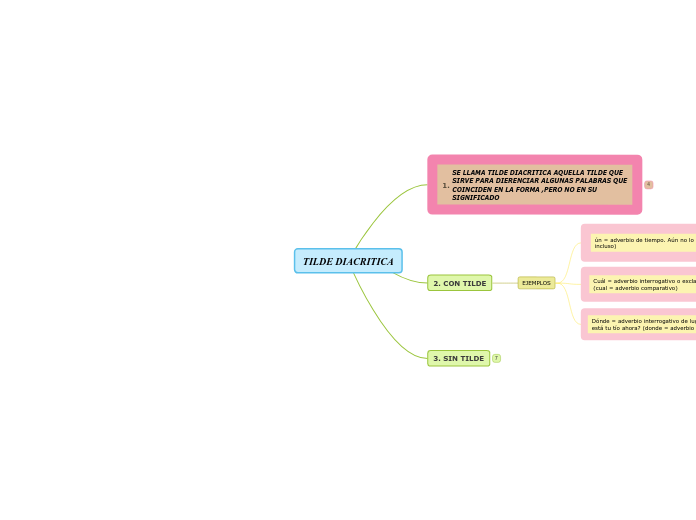jonka stalyn quisaguano 4 vuotta sitten
5875
TILDE DIACRITICA

jonka stalyn quisaguano 4 vuotta sitten
5875

Lisää tämän kaltaisia
What's your essay about?
Type in the title of your essay.
Work on the structure of your essay.
Develop the ideas presented in the introduction.
Type in a one-line sentence to describe the third body paragraph.
(Lo que quieras;cuando venga,iré; como tú digas; quien quiera que venga .
Cuando no sean interrogativos o exclamativos :
Type in a one-line sentence to describe the second body paragraph.
Aun (cuando equivale a también ,incluso,hasta): Aun el sábado trabaja (incluso el sábado trabaja ).
Type in a one-line sentence to describe the first body paragraph.
Analyze another essay written on this topic
Find at least one example and see whether it is well written or not.
Type in the title and the author(s)
of the essay which you're going to analyze.
Is the logical sequence of the essay accurate or faulty?
Select an option:
Mí = pronombre personal. A mí poco me importa su opinión. (mi = adjetivo posesivo/nota musical)
What evidence do(es) the author(s) present?
Type in the evidence.
Add notes if you need larger blocks of text.
Tú = pronombre personal: Tú no sabes ni siquiera su nombre (tu = adjetivo posesivo)
What claims do(es) the author(s) make?
Type them in.
Research your topic
Write down the sources you will base your essay on.
List second-hand information :
comments, interpretations, or discussions regarding the original material, etc.
What secondary source(s) will you take into account for your research?
Type in your source(s)
or
Add hyperlinks to your source(s).
List first-hand information :
What primary source(s) will you take into account for your research?
Type it (them) in.